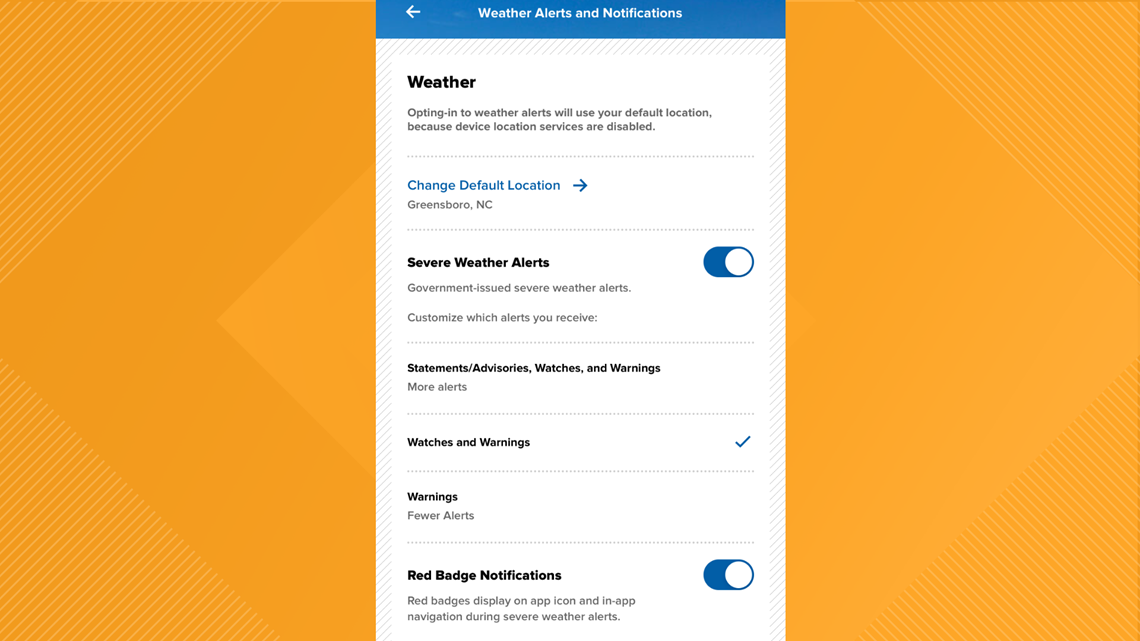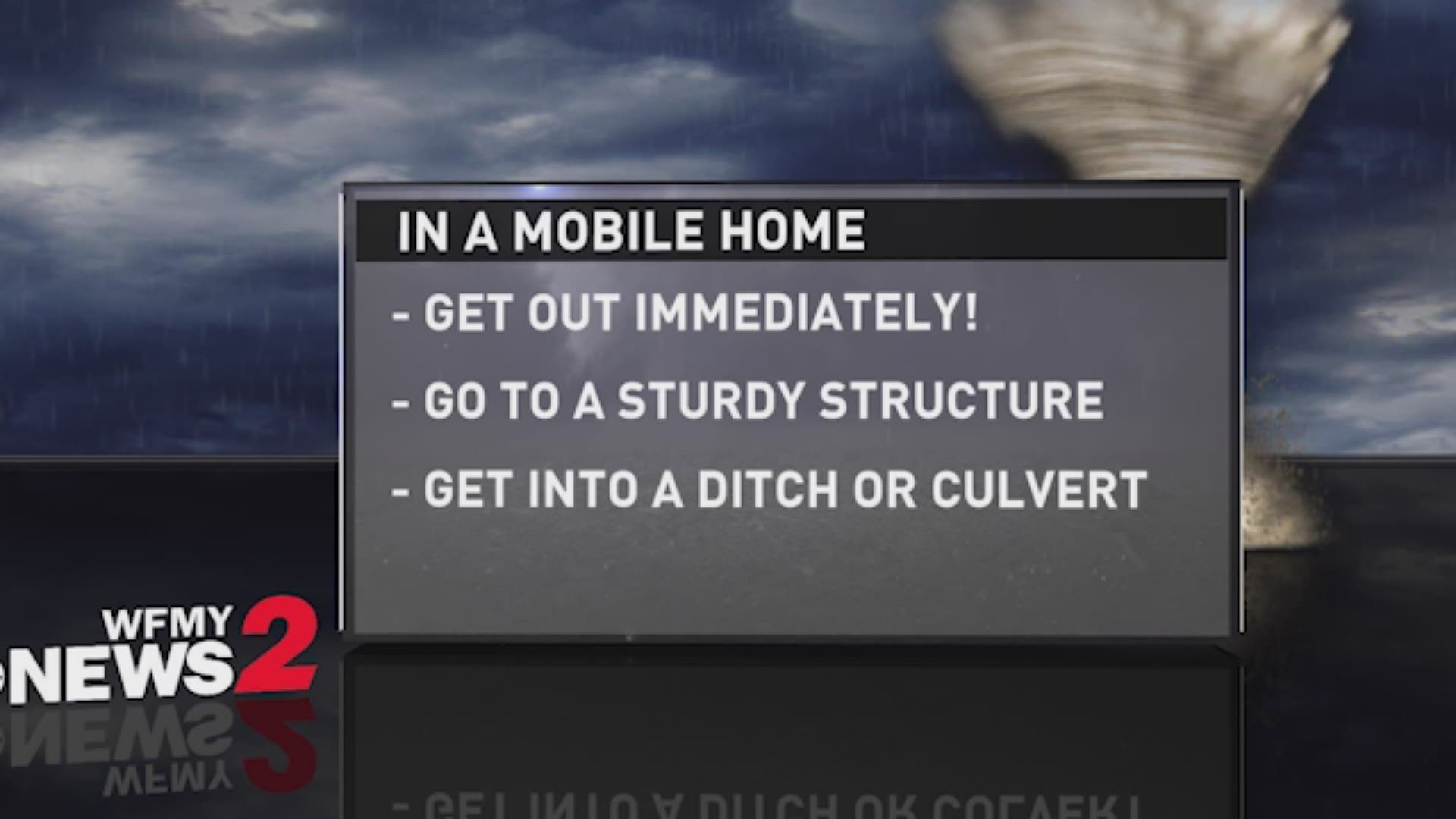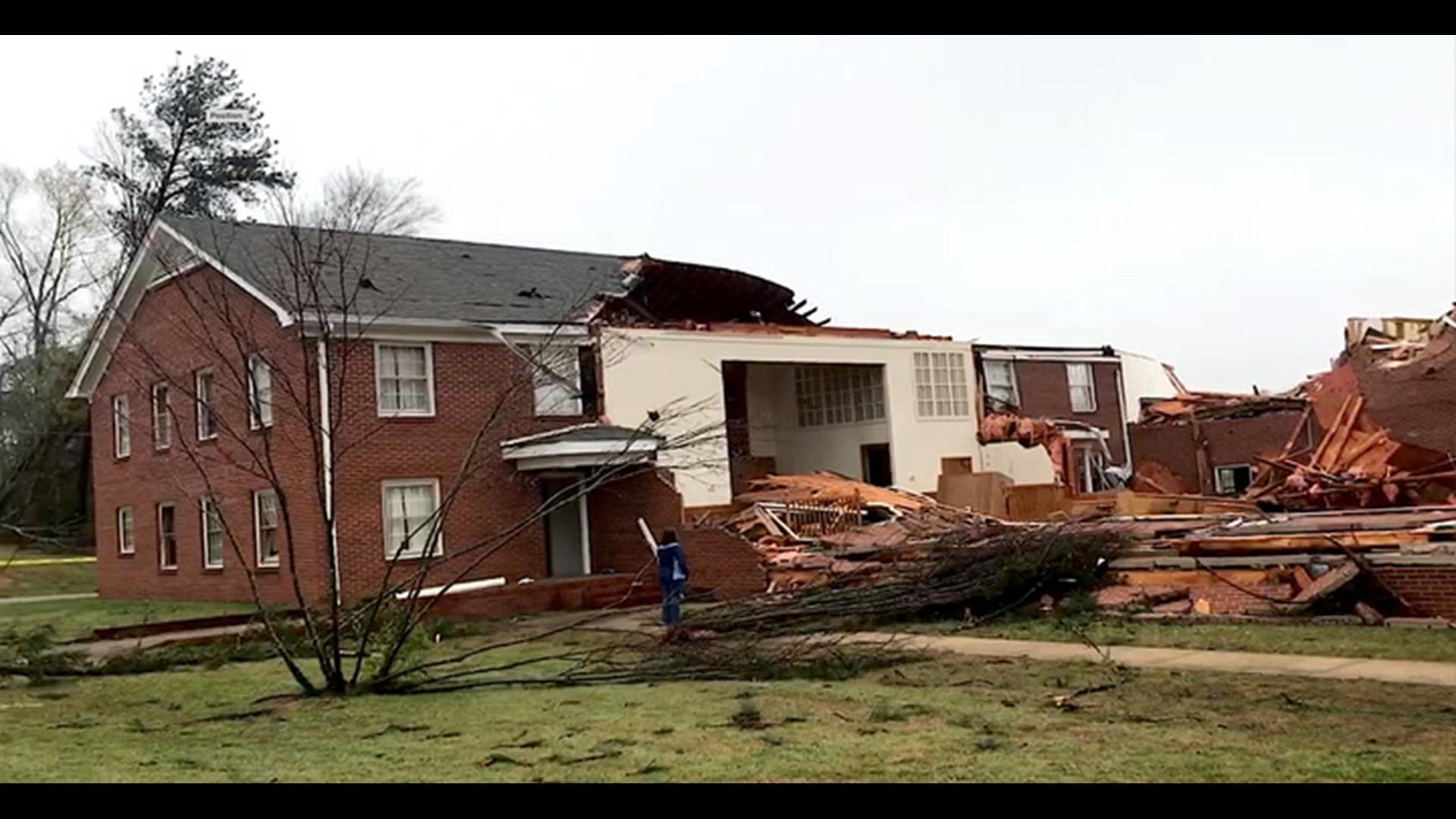GREENSBORO, N.C. — Here are some safety tips, that could keep you and your family safe during a tornado.
It's crucial to make sure you have a safety plan in place before a tornado hits. Know what you would do before, during and after a tornado.
WHAT IS A TORNADO WATCH?
A Tornado Watch means that conditions are favorable for tornado development. People located in and around the watch area should keep an eye toward the sky and listen to their NOAA weather radio or tune to WFMY News 2 for further weather information.
The watch is intended to give you time to prepare and review your safety rules.
WHAT IS A TORNADO WARNING?
A Tornado Warning means that a tornado has been detected by the National Weather Service Doppler radar or a reliable report of a tornado has been reported from the field. A tornado warning is usually issued for portions of one or two counties for an hour or less. The storm could also produce large hail and destructive straight-line winds. If the tornado warning includes your neighborhood or workplace, you should seek safe shelter immediately.
BEFORE A TORNADO
- Be alert to changing weather conditions.
- Listen to NOAA Weather Radio or to commercial radio or television newscasts for the latest information.
- Look for approaching storms.
- Have a safety plan in place and be ready to act.
- Locate a safe place in your home.
DOWNLOAD IT!
Download the WFMY News 2 Apps: If your power or cable goes out, you'll still be able to connect online.
Download the WFMY News 2 App for live streaming video, updated weather forecasts, and reports from our field crews.
You can download the WFMY News 2 app a few ways, here are the options below:
►Text the word APP to 336-379-5775
►For iPhone | https://apple.co/3aaH6iM
►For Android | https://bit.ly/3aea9Sv
MOBILE WEATHER ALERTS
Make sure severe weather notifications are turned on your phone! No matter whether you use an iPhone or Android, the process is the same.
STEP ONE: Open the WFMY News 2 App.
STEP TWO: Tap the gear in the top right corner.
STEP THREE: Tap “Notifications,” and find “Severe Weather Alerts.”
STEP FOUR: Make sure to turn on notifications, and you can pick how many alerts you get.
- If you want more, tap the option with statements and advisories.
- If you want fewer, tap the option with warnings only.
Consider leaving your phone near your bed so you'll be able to hear alerts headed your way overnight.


LOOK FOR DANGER SIGNS
- Dark, often greenish sky
- Large hail
- A large, dark, low-lying cloud (particularly if rotating)
- Loud roar, similar to a freight train
- If you see approaching storms or any of the danger signs, be prepared to take shelter immediately.
TORNADO SAFETY TIPS
From the National Weather Service
- The safest place to be is an underground shelter, basement, or safe room.
- If no underground shelter or safe room is available, a small, windowless interior room or hallway on the lowest level of a sturdy building is the safest alternative.
- Get low to the ground or floor as much as possible and cover yourself.
- Cover yourself with a mattress, sleeping bags, or pillow.
- Wear a helmet to protect your head.
- Mobile homes are not safe during tornadoes. Abandon mobile homes and go to the nearest sturdy building or shelter immediately.
- If you are caught outdoors, seek shelter in a basement, shelter or sturdy building. If you cannot quickly walk to a shelter: Immediately get into a vehicle, buckle your seat belt and try to drive to the closest sturdy shelter.
- If flying debris occurs while you are driving, pull over and park. Now you have the following options as a last resort: Stay in your vehicle with the seat belt on. Put your head down below the windows, covering with your hands and a blanket if possible.
- If you can safely get noticeably lower than the level of the roadway, exit your car, and lie in that area, covering your head with your hands.
- Your choice should be driven by your specific circumstances.
HOUSE/STAND-ALONE BUILDING:
- Get to the lowest level possible.
- Go to an area with as many walls between you as possible.
- Get in a bathtub or interior closet.
MOBILE HOME:
- Get out of the mobile home and get in a sturdy building if possible.
- Get out of the mobile home and hunker in a ditch.
- If no ditch or building is nearby, plan ahead and get to a sturdy building ahead of time.
APARTMENT:
- Get to the lowest level (go to a neighbor's apartment on the first floor).
- Regardless of what floor you're on, get in a bathtub or interior closet.
- If you are on a higher level and can't get to a lower apartment, hunker down in the breezeway of the apartment building.
CAR:
- If possible, pull over, park, get inside a building and out of the storm.
- If you have to stay in your car, try to find a ditch to park in and use your emergency brake.
- DO NOT park under a bridge or overpass.
KEEPING SAFE IN A TORNADO
- Cover yourself with a mattress, sleeping bags, or pillows.
- Wear a helmet to protect your head.
- Hunker down as much as possible.
WHAT TO DO AFTER A TORNADO
Tips provided by Ready.gov
- If you are trapped, do not move about or kick up dust. Tap on a pipe or wall or use a whistle, if you have one, so that rescuers can locate you.
- Listen to local officials for updates and instructions.
- Check-in with family and friends by texting or using social media.
- Watch out for debris and downed power lines.
- Stay out of damaged buildings and homes until local authorities indicate it is safe.
- Use extreme caution during post-disaster clean-up of buildings and around debris. Do not attempt to remove heavy debris by yourself. Wear protective clothing, including a long-sleeved shirt, long pants, work gloves, and sturdy, thick-soled shoes during clean-up.
- Photograph the damage to your property in order to assist in filing an insurance claim.
- Do what you can to prevent further damage to your property, (e.g., putting a tarp on a damaged roof), as insurance may not cover additional damage that occurs after the storm.
- If your home is without power, use flashlights or battery-powered lanterns rather than candles to prevent accidental fires.
FOLLOW WFMY NEWS 2
Facebook: https://bit.ly/3326pAY
Twitter: https://bit.ly/2vIPZkT
Instagram: https://bit.ly/39Ghs5a
Stay connected to local, national and breaking news: Download the new WFMY News 2 app.
►Text the keyword APP to 336-379-5775
►For the latest weather conditions and forecast text the keyword WEATHER to 336-379-5775
►For local news stories right to your phone text the keyword NEWS to 336-379-5775
►Need our Call for Action Team? Text keyword CFA to 336-379-5775


